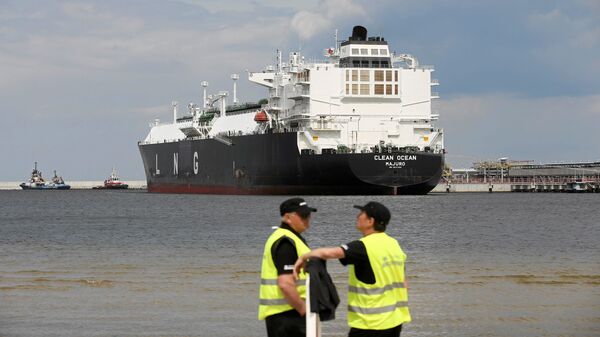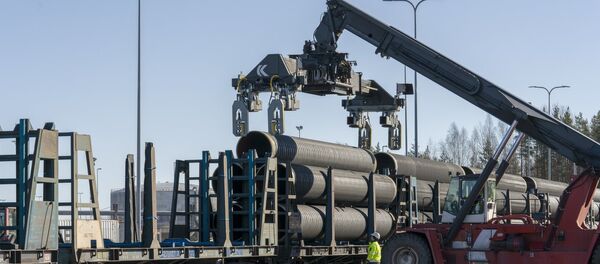Polish oil and gas company PGNiG and American Venture Global LNG have signed a 20-year contract for the supply of two million tons of liquefied natural gas annually, which equals about 2.7 billion cubic meters of natural gas per year following regasification, Management Board President Piotr Wozniak stated.
"We will be receiving two million tons of LNG annually from the US for 20 years," Wozniak told reporters.
Wozniak also claimed that LNG from the US would be almost 30 percent cheaper than the Russian natural gas.
Meanwhile, the Polish Prime Minister Mateusz Morawiecki has stated that US LNG would "boost" the country's "sovereignty," as well as its "competitiveness."
"Our predecessors wanted to sign a deal with Gazprom until 2037. It would be gas handcuffs," Morawiecki claimed.
PGNiG imports up to 10 billion cubic meters of gas per year from Russia's Gazprom under a long-term contract that expires in 2022.
READ MORE: Nord Stream 2 'Noose' for Warsaw, Claims Former Polish Defense Minister
In June, PGNiG inked long-term agreements with US Port Arthur LNG and Venture Global LNG for LNG deliveries in a bid to diversify its suppliers and reduce dependence on Russian gas.
“Purchasing of liquefied natural gas in the USA will not only allow further diversification of our import portfolio following 2022, but will also let us develop our trading competences and enable PGNiG’s presence as a global LNG market player,” PGNiG's CEO was cited as saying in a June statement.
While seeking to promote its LNG in Europe as an alternative to energy imports from other suppliers, Washington has been attempting to halt the implementation of the Nord Stream 2 project, with the US State Department warning Western companies involved in the venture that they risked sanctions.
Nord Stream 2 is a joint venture between Gazprom, France's Engie, Austria's OMV AG, UK-Dutch Royal Dutch Shell, and Germany's Uniper and Wintershell, which aims to supply 55 billion cubic meters of Russian natural gas per annum to the EU, by delivering it via a pipeline under the Baltic Sea to Germany.




